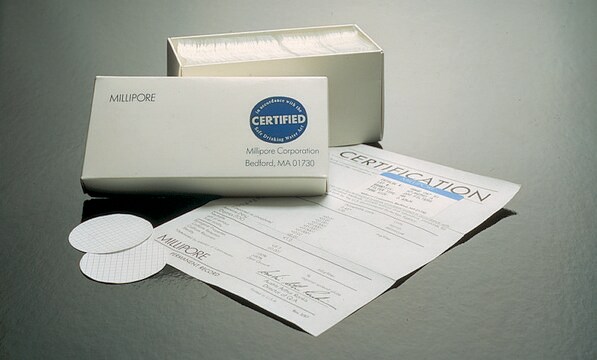おすすめの製品
製品名
MOC22 Mouse Oral Squamous Cell Carcinoma (OSCC) Cell Line,
由来生物
mouse
品質水準
包装
vial of ≥1X10⁶ cells/vial vials
メーカー/製品名
Millipore
テクニック
cell culture | mammalian: suitable
輸送温度
liquid nitrogen
保管温度
−196°C
アプリケーション
- Each vial contains >1X106 viable cells.
- MOC22 cells are verified to be of mouse origin and negative for human, rat, Chinese hamster, Golden Syrian hamster, and non-human primate interspecies contamination, as assessed by a Contamination Clear panel by Charles River Animal Diagnostic Services
- Cells tested negative for infectious diseases against a Mouse Essential CLEAR panel by Charles River Animal Diagnostic Services.
- Cells tested negative for mycoplasma.
特徴および利点
The MOC (Mouse Oral Cancer) cell lines provide a syngeneic HNSCC cancer model that can be transplanted into C57BL/6 mice. These lines are important models for immune cell infiltration studies. The MOC lines have been utilized to compare and identify potential clinical scenarios that are applicable to human Oral Squamous Cell Carcinoma. The MOC22 cell line was derived from primary tumors in a C57BL/6 WT mouse and shows indolent growth compared with the aggressive, metastatic MOC2 line.
ターゲットの説明
Despite ongoing efforts to understand growth and signaling pathways in head and neck squamous cell carcinoma (HNSCC), patient outcomes have remained largely unchanged in recent decades. A significant barrier to understanding and studying immune responses in the context of cancer in recent years has been the lack of available syngeneic mouse models. Xenograft approaches have historically been popular models, but they unfortunately do not model important adapative immunity responses.The MOC cell lines have expanded our understanding of CXCL14 downregulation in metastatic lymph nodes. Previously, CXCL14 expression had been associated with T-cell associated mechanisms for tumor suppression. Tumor Infiltrating Lymphocyte (TIL) studies using MOC1 and MOC2 have found a cell-specific association in Oral Squamous Cell Carcinomas (OSCCs) involving CXCL14 downregulation resulting in TIL increase which leads to tumor suppression.The MOC group of cell lines contained common HNSCC mutations in addition to human-related OSCC driver pathways. All MOC lines share RAS pathway mutations and MOC22 was found to have HRAS mutations which is relevant in relation to human HRAS-mutant OSCC groups. Source: The MOC22 cell line was derived from carcinogen-induced oral tumors in immunocompetent C57BL/6 mice.References: 1. Judd, N. P., Allen, C. T., Winkler, A. E., & Uppaluri, R. (2012). Comparative analysis of tumor-infiltrating lymphocytes in a syngeneic mouse model of oral cancer. Otolaryngology--Head and Neck Surgery, 147(3), 493-500.2. Parikh, A., Shin, J., Faquin, W., Lin, D. T., Tirosh, I., Sunwoo, J. B., & Puram, S. V. (2020). Malignant cell-specific CXCL14 promotes tumor lymphocyte infiltration in oral cavity squamous cell carcinoma. Journal for ImmunoTherapy of Cancer, 8(2).3. Onken, M. D., Winkler, A. E., Kanchi, K. L., Chalivendra, V., Law, J. H., Rickert, C. G., ... & Uppaluri, R. (2014). A surprising cross-species conservation in the genomic landscape of mouse and human oral cancer identifies a transcriptional signature predicting metastatic disease. Clinical Cancer Research, 20(11), 2873-2884.
保管および安定性
MOC22 cells should be stored in liquid nitrogen until use. The cells can be cultured for at least 10 passages after initial thawing without significantly affecting cell marker expression and functionality.
免責事項
Unless otherwise stated in our catalog or other company documentation accompanying the product(s), our products are intended for research use only and are not to be used for any other purpose, which includes but is not limited to, unauthorized commercial uses, in vitro diagnostic uses, ex vivo or in vivo therapeutic uses or any type of consumption or application to humans or animals.
保管分類コード
10 - Combustible liquids
WGK
WGK 3
引火点(°F)
Not applicable
引火点(℃)
Not applicable
適用法令
試験研究用途を考慮した関連法令を主に挙げております。化学物質以外については、一部の情報のみ提供しています。 製品を安全かつ合法的に使用することは、使用者の義務です。最新情報により修正される場合があります。WEBの反映には時間を要することがあるため、適宜SDSをご参照ください。
Jan Code
SCC471:
試験成績書(COA)
製品のロット番号・バッチ番号を入力して、試験成績書(COA) を検索できます。ロット番号・バッチ番号は、製品ラベルに「Lot」または「Batch」に続いて記載されています。
ライフサイエンス、有機合成、材料科学、クロマトグラフィー、分析など、あらゆる分野の研究に経験のあるメンバーがおります。.
製品に関するお問い合わせはこちら(テクニカルサービス)







